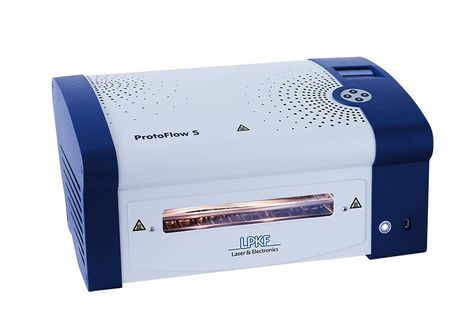Difference between revisions of "Reflow Oven"
Jump to navigation
Jump to search
Jwhipple15 (talk | contribs) |
Jwhipple15 (talk | contribs) |
||
| Line 12: | Line 12: | ||
[[{{#show: {{FULLPAGENAME}}|?Has icon|link=none}}|100px|left|top|{{#show: {{FULLPAGENAME}}|?Has icondesc}}]] | [[{{#show: {{FULLPAGENAME}}|?Has icon|link=none}}|100px|left|top|{{#show: {{FULLPAGENAME}}|?Has icondesc}}]] | ||
[[{{#show: {{FULLPAGENAME}}|?Has image|link=none}}|thumb|upright=1.5|{{#show: {{FULLPAGENAME}}|?Has imagedesc}}]] | [[{{#show: {{FULLPAGENAME}}|?Has image|link=none}}|thumb|upright=1.5|{{#show: {{FULLPAGENAME}}|?Has imagedesc}}]] | ||
| − | The ProtoFlow S N2 is LPKF's premiere convection oven, ideal for lead-free reflow soldering, meeting the stringent demands of rapid PCB soldering applications. The ProtoFlow S N2 features even heat distribution, easy programming, and many pre-defined temperature profiles. The compact design and efficient power consumption make it one of the most useful components in any rapid PCB prototyping environment | + | The ProtoFlow S N2 is LPKF's premiere convection oven, ideal for lead-free reflow soldering, meeting the stringent demands of rapid PCB soldering applications. The ProtoFlow S N2 features even heat distribution, easy programming, and many pre-defined temperature profiles. The compact design and efficient power consumption make it one of the most useful components in any rapid PCB prototyping environment. <ref>Description taken from [https://www.lpkfusa.com/products/pcb_prototyping/smt_assembling/protoflow_s/ LPKF].</ref> |
<br/>__TOC__ | <br/>__TOC__ | ||
| Line 20: | Line 20: | ||
* [[Media:protoflow_datasheet.pdf|Datasheet]] | * [[Media:protoflow_datasheet.pdf|Datasheet]] | ||
| − | + | ||
Revision as of 11:53, 6 July 2018
The ProtoFlow S N2 is LPKF's premiere convection oven, ideal for lead-free reflow soldering, meeting the stringent demands of rapid PCB soldering applications. The ProtoFlow S N2 features even heat distribution, easy programming, and many pre-defined temperature profiles. The compact design and efficient power consumption make it one of the most useful components in any rapid PCB prototyping environment. [1]
Documentation
Training
